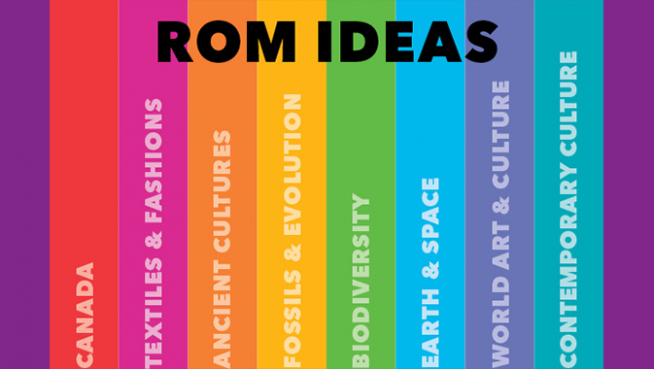ROM Ideas: Biodiversity

To let you in on the latest insights and discoveries from behind the scenes, ROM Ideas, formerly the ROM Colloquium, invites its patrons to step into the realm of ROM researchers, technicians, and other experts who perform ground-breaking work in our labs, collections areas, and at field sites all around the world. This free two-day event (May 3rd & 4th) highlights the latest global discoveries and ongoing research within each of our eight Centres of Discovery, delivered in TED X-style 12-15 minute talks. The eight centers work collaboratively to capture the ever-changing natural and cultural worlds we live in, and to help you, our audience, understand these changes. Each Centre is animated by expert collections and research staff, programmers, educators and communications people who create public programs that offer memorable visitor experiences and build partnerships across communities.
ROM Ideas kicks off on Saturday with Biodiversity. The Center of Biodiversity is a leading resource for understanding and conserving our natural world. Under the umbrella of ROM Biodiversity you’ll find a wealth of talented ROM curators, researchers, educators, programmers, external experts, collaborators, and supporters who work together to build a better understanding of the world we live in. Led by Managing Director Dave Ireland, ROM Biodiversity includes content and experts in botany, entomology, herpetology, ichthyology, invertebrate zoology, mammalogy, mycology, and ornithology. Here’s a sneak peak of what you’ll hear at ROM Ideas:
How are the ROM’s collections used to advance current research?
Dave Ireland: Our freshwater Ontario fish collection has been used to understand our changing climate; they were used to document northern range movements of fish in Ontario as it was correlated with climate patterns.
Our South American cichlid collection is one of the best in the world, and has been used to identify at least 12 new species in the last couple years alone, with perhaps more to follow; our fish curator Hernan Lopez-Fernandez is using this collection to understand how and when these fish evolved, and where they fit in the grander tree of life
Our bat collection is a good example of a collection that is used to help identify a new species, using morphological and molecular genetic techniques - and recently (March 2014) one was named after our Assistant Curator of Mammalogy, Burton Lim ( Sturnira burtonlimi ).
Our Passenger pigeon collection, the largest in the world, was the primary source for DNA that is currently being used by external genetic scientists to test the concept of de-extinction. Lead investigator Dr. Ben Novak has said he will have the completed Passenger Pigeon genome by September 2014, and will then pursue the controversial technique of placing this genome within an extant host species (a closely related pigeon) with the goal to “revive” or de-extinct the Passenger Pigeon. We will discuss this controversial concept at both ROM Ideas and in more depth at a special event planned for September 26th 2014 at the ROM.
Our botany collections, particularly the hawthorns of British Columbia, are being used to investigate their medicinal values for heart therapy in humans.
How do change, fragmentation and destruction of natural surroundings impact ROM research?
Dave Ireland: While in Borneo, our team of 8 biologists noted the vast deforestation that had taken place since the last major survey of the area, back in 1978-79; anecdotally noting that 90% of the lowland forests seemed to be converted to oil palm and other agricultural practices. The team found the only untouched forests up on Mulu Mountain.
Doug Currie, our senior entomologist, has been studying black fly populations in the Arctic and he and his students have found significant changes, largely due to a changing climate; where there was once no biting black fly species (not all black fly species bite!), there are now several species. This will have dramatic, and perhaps grave, consequences for the wildlife and the cultures of the north.
